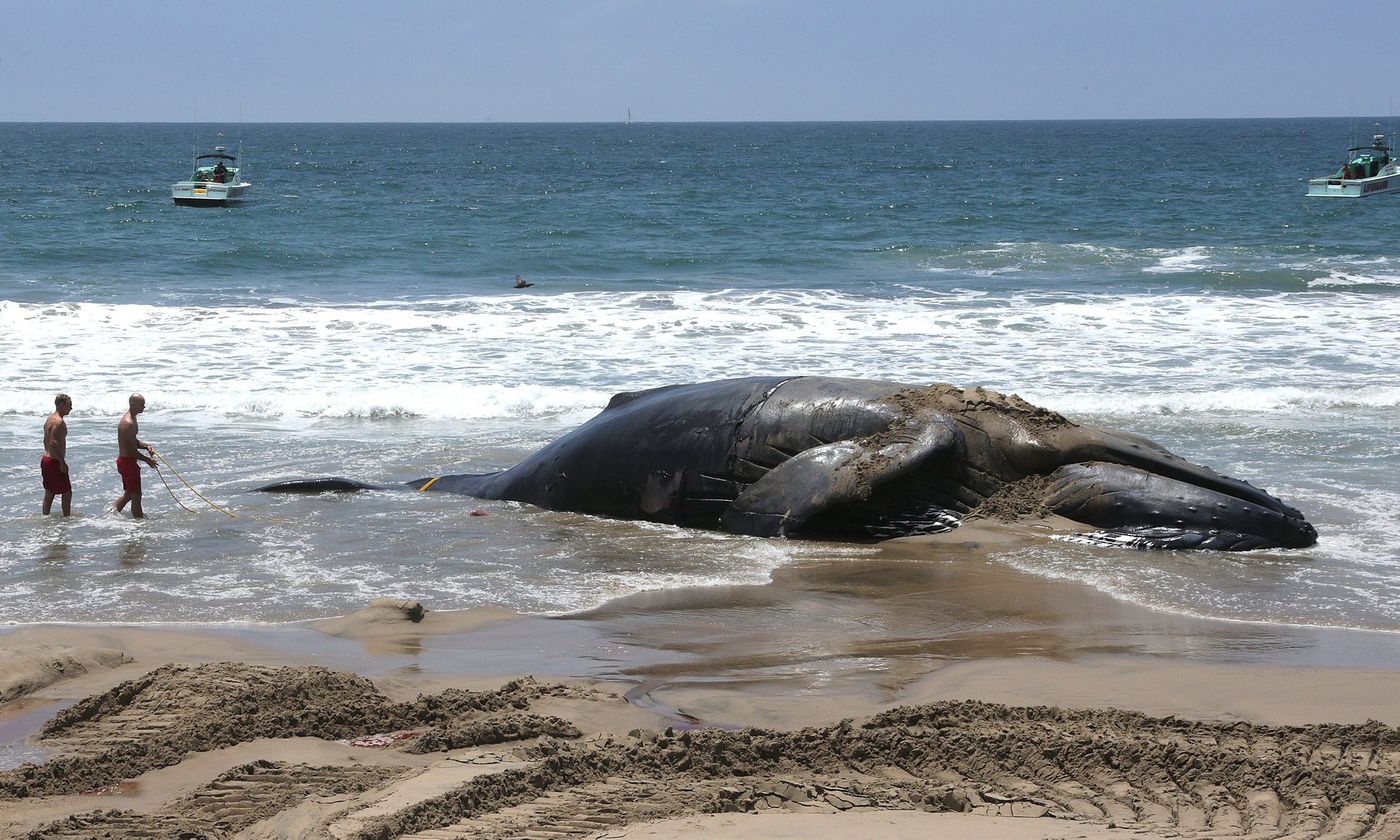Decomposing Whale Carcass Cut Up After it Continued to Wash Up on CA Beaches
Have you heard the tale of Wally the whale?
It’s an interesting story about a 10-20 year-old humpback whale carcass that continues to wash up on Californian beaches, over and over, despite every attempt to drag the carcass back out to sea where it belongs.

Image Credit: Mike Nelson/EPA
Authorities have reportedly dragged the carcass out to sea at least five separate times, but it continues to wash up at a different beach on the Californian coast. It has reportedly beached itself for a sixth time.
“Wally was first towed out into the ocean after washing up on Dockweiler state beach in Los Angeles County before the Fourth of July weekend,” The Guardian reports. “The decaying carcass was towed again by lifeguards a week later when it drifted toward San Pedro. The whale was spotted near Newport Beach on 10 July and was towed out a third time but drifted back on 11 July and had to be removed a fourth time.”
Now, the whale has beached itself for a fifth and sixth time, and authorities have officially gotten tired of wasting the resources on it.
The carcass, which has started decomposing, is not a very pleasant thing to have on public beaches. Not only does it kill the mood of romantic sunsets with the image of death, but it also leaves a very smelly decomposition scent that lingers and wafts for long distances.
Because humpback whales are so large, this carcass is nothing short of a very heavy blob on the shore. It takes a lot of heavy-duty equipment to manage.
There are numerous ways that a whale’s carcass can be disposed of. One of the most economical ways is to tow it back out to sea, where nature can take its course, although this method hasn't been very effective this this particular carcass. Other ways include burying it at the beach itself, or depending where it washes up, leaving it and letting nature take its course there.
In extreme situations, the carcass may be dismantled and taken away, which ensures that the carcass doesn’t wash up again.
After the fifth wash-up, authorities tried yet another tow, but it seems that the Wally carcass was beached for a sixth time, and now authorities have taken action by cutting the carcass up into pieces and removing it from the beach.
A graphic video of the cutting and removal can be watched below:
This isn't the first time that a whale of this size has been beached. The situation is actually relatively common around the globe. When the animals pass away, they often rise to the surface and float, which allows currents to take them where the ocean wills.
Source: The Guardian, YouTube








